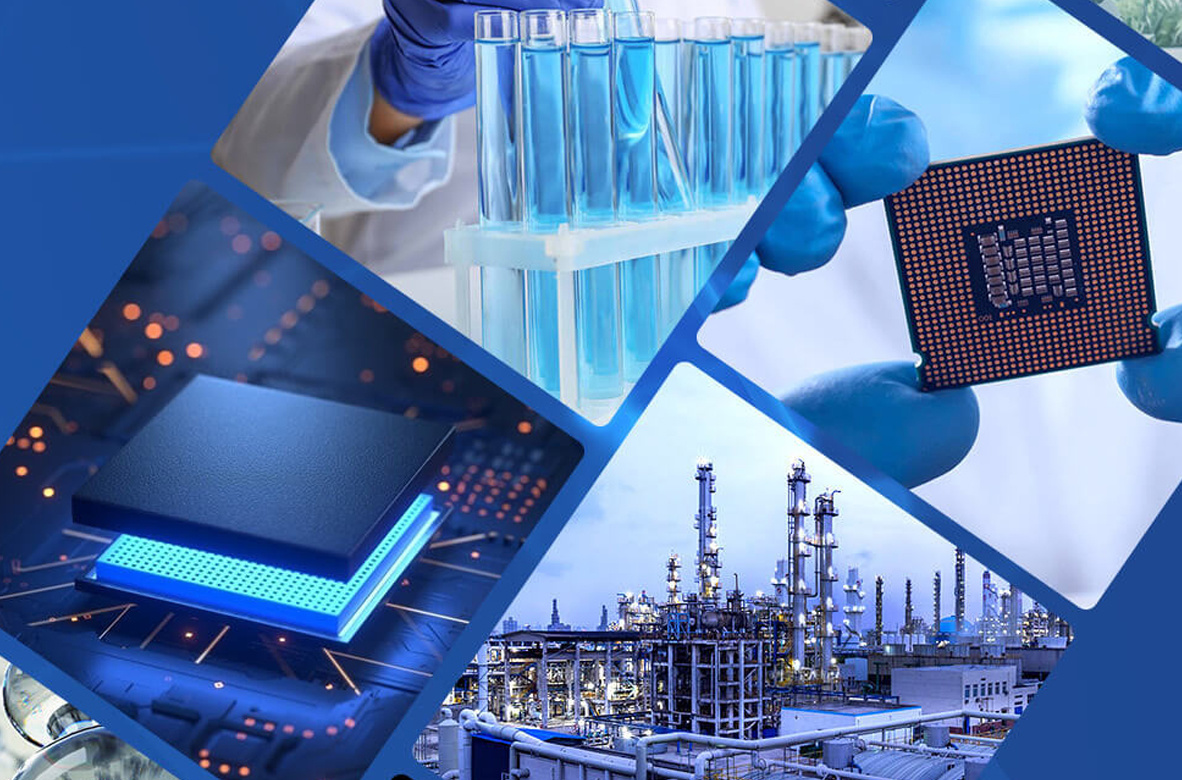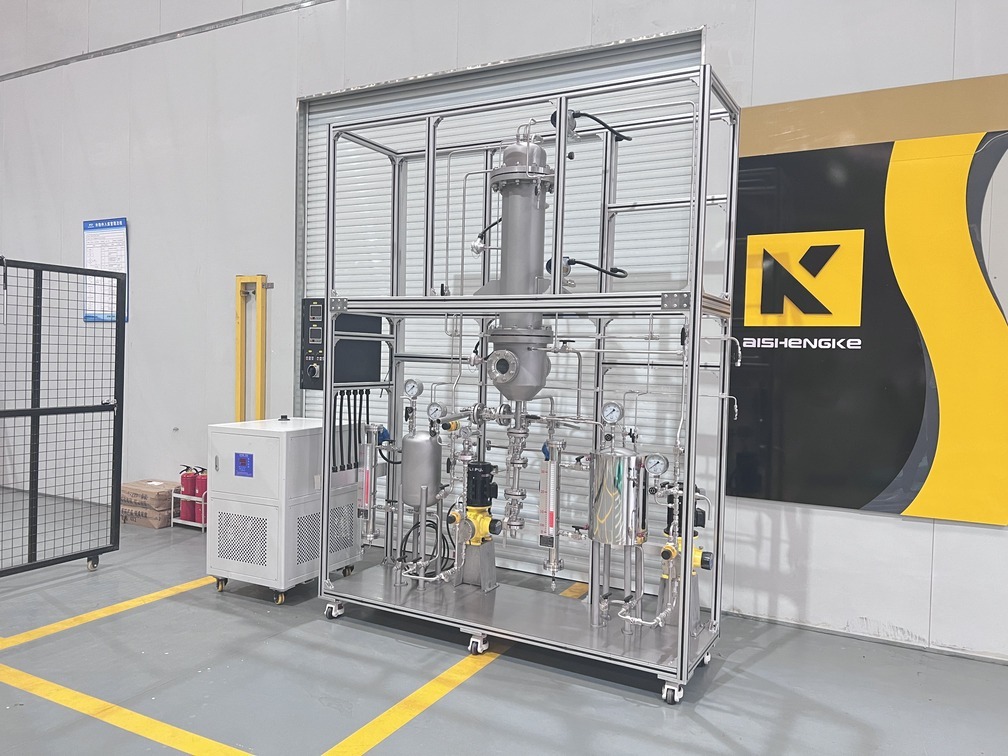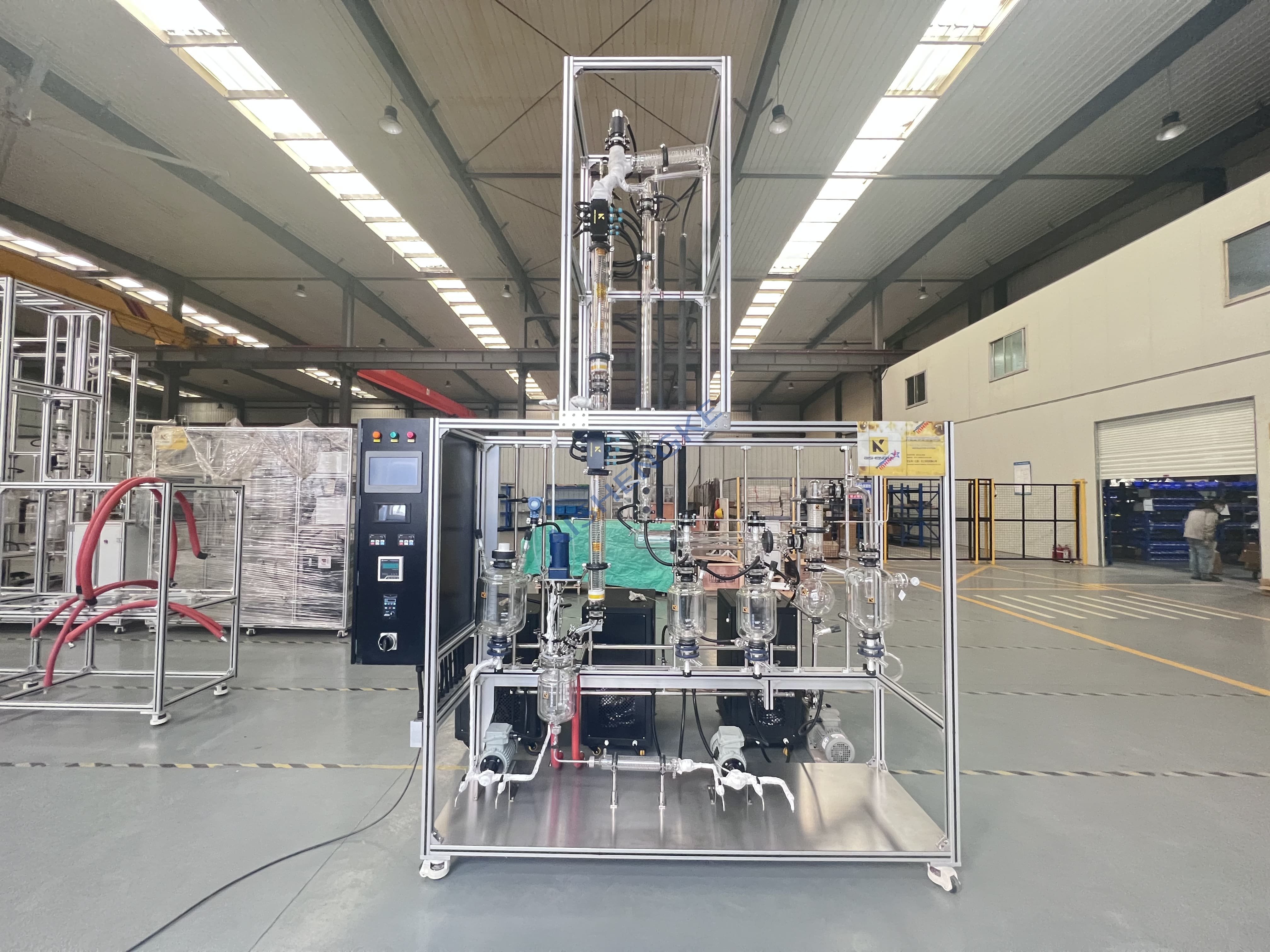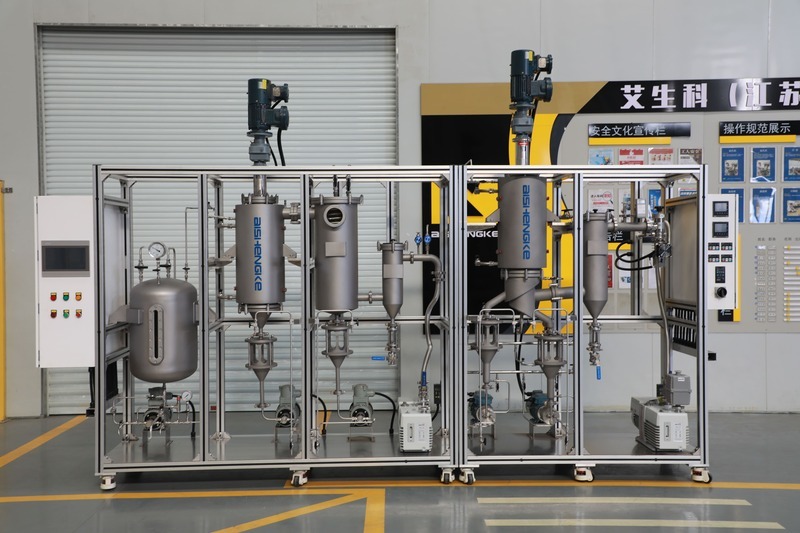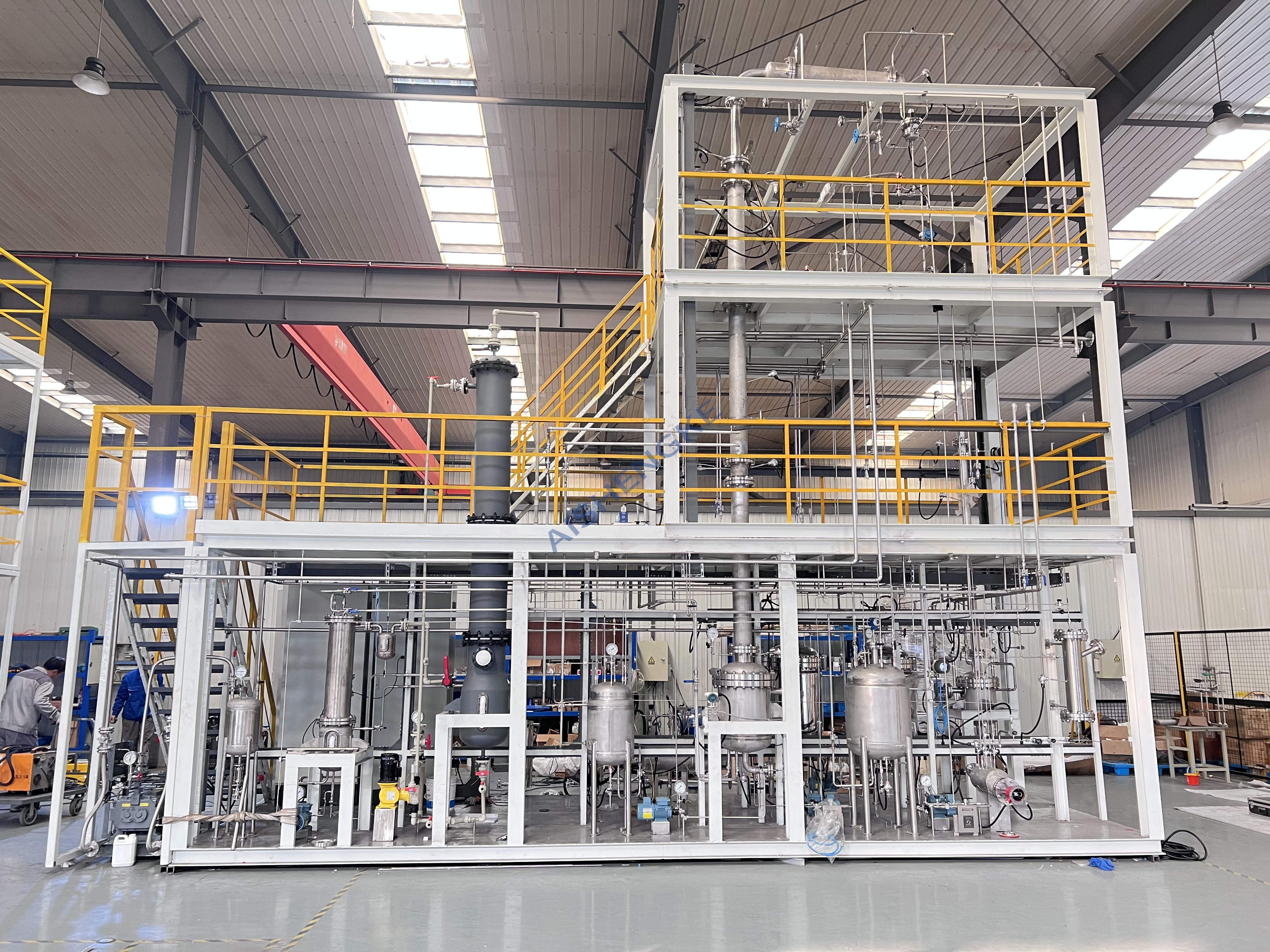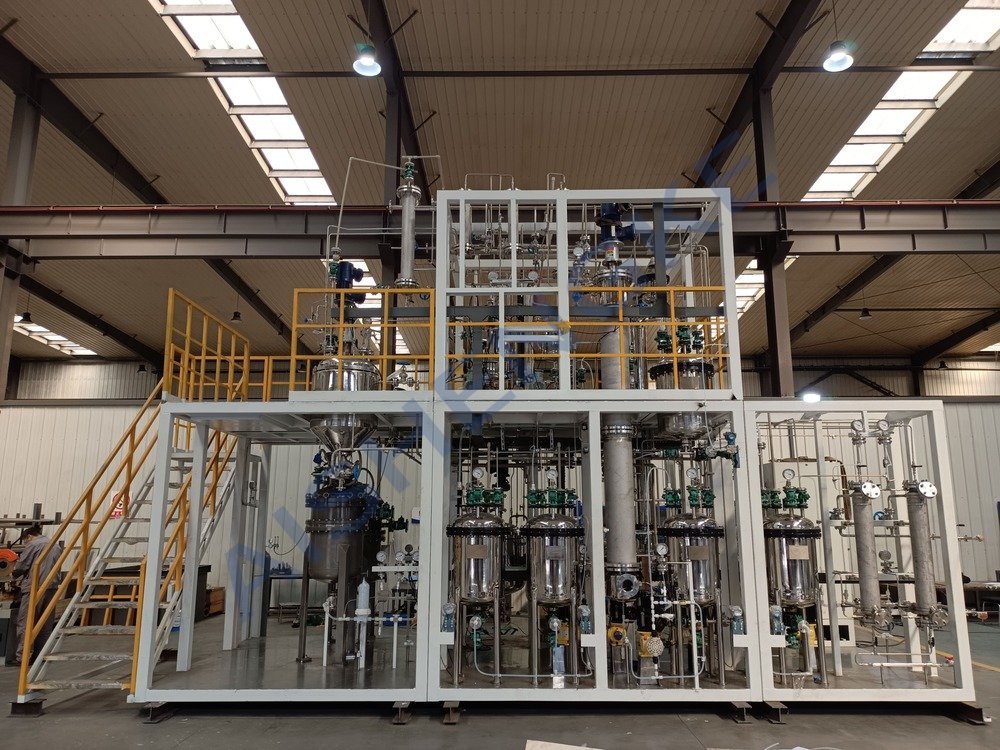Industrial Continuous Distillation Unit
Category
Description
Case Introduction
This project is specifically: The Industrialization Project Of Fluorine-based Electronic Special Gas
The whole project is delivered by EPC. This project mainly builds a continuous fluorine-based electronic special gas production device for the customer, with a processing capacity of 100t/a. The whole process flow is from reaction synthesis→separation and purification→product filling→recycling→tail gas treatment , the purity of the final product can reach more than 6N, the whole system is a turnkey project, from process design and calculation → core equipment design and production → modular engineering assembly → commissioning, the entire system is highly automated, with remote monitoring and operation, equipped with DCS The control system and host computer configuration software enable real-time monitoring and collection of system data, historical data and curve query, safety interlock, etc.
Rectification is a chemical term, also called distillation, which is to separate the various components that are compatible, use the different boiling points of the components to raise the temperature, and condense the required component vapor to meet the requirements. It is mainly heating and condensation.
According to the mode of operation, rectification operation can be divided into continuous rectification and batch rectification.
This device is an industrial continuous rectification device.
The typical operation of continuous rectification is as follows: the rectification tower supplies vapor and liquid two-phase contact for interphase mass transfer, the condenser at the top of the tower condenses the vapor partially, and part of the condensed liquid returns to the top of the tower as reflux liquid, and the rest of the distillate is the tower top product. The reboiler located at the bottom of the column vaporizes part of the liquid, the vapor rises up the column, and the remaining liquid is used as the bottom product. The feed is added to the middle of the tower, the liquid in the feed and the liquid from the upper tower descend along the tower, and the vapor in the feed rises along the tower with the vapor from the lower tower. In the whole rectification column, the gas-liquid two-phase contacts in countercurrent to carry out interphase mass transfer. The volatile components in the liquid phase enter the vapor phase, and the less volatile components in the vapor phase transfer to the liquid phase. For systems that do not form azeotropes, as long as the design and operation are proper, the distillate will be a high-purity volatile component, and the bottom product will be a high-purity low-volatile component. The tower section above the feed inlet further concentrates the volatile components in the rising vapor, which is called the rectification section; the tower section below the feed inlet extracts the volatile components from the descending liquid, called the stripping section. The combination of two stages of operation can completely separate the two components in the liquid mixture and produce two products with the required purity.
The reason why continuous distillation can separate the liquid mixture more completely lies in the application of reflux. The reflux includes both a liquid with a high concentration of volatile components at the top of the column and a vapor with a high concentration of less volatile components at the bottom of the column to return to the column. The vapor-liquid reflux forms a vapor-liquid two-phase in countercurrent contact, so that relatively pure single-component products are obtained at both ends of the tower. The ratio of the amount of liquid flowing back into the tower at the top of the tower and the amount of product at the top of the tower is called the reflux ratio. It is an important control parameter of the rectification operation, and its change affects the separation effect and energy consumption of the rectification operation.
Continuous distillation equipment adopts direct steam distillation, and continuously feeds and discharges materials, so that the production efficiency is high, labor can be saved and working conditions can be improved. The industrial continuous distillation device designed by Changzhou Aishengke Chemical Technology Co., Ltd. can process 40-60 tons of raw materials per day. It has been used in perfume factories with good results. For varieties such as lavender and claret that are easy to distill, it is appropriate to use continuous distillation equipment. With the rapid development of the production of spices such as lavender and the improvement of conditions, continuous distillation equipment has a good development prospect.

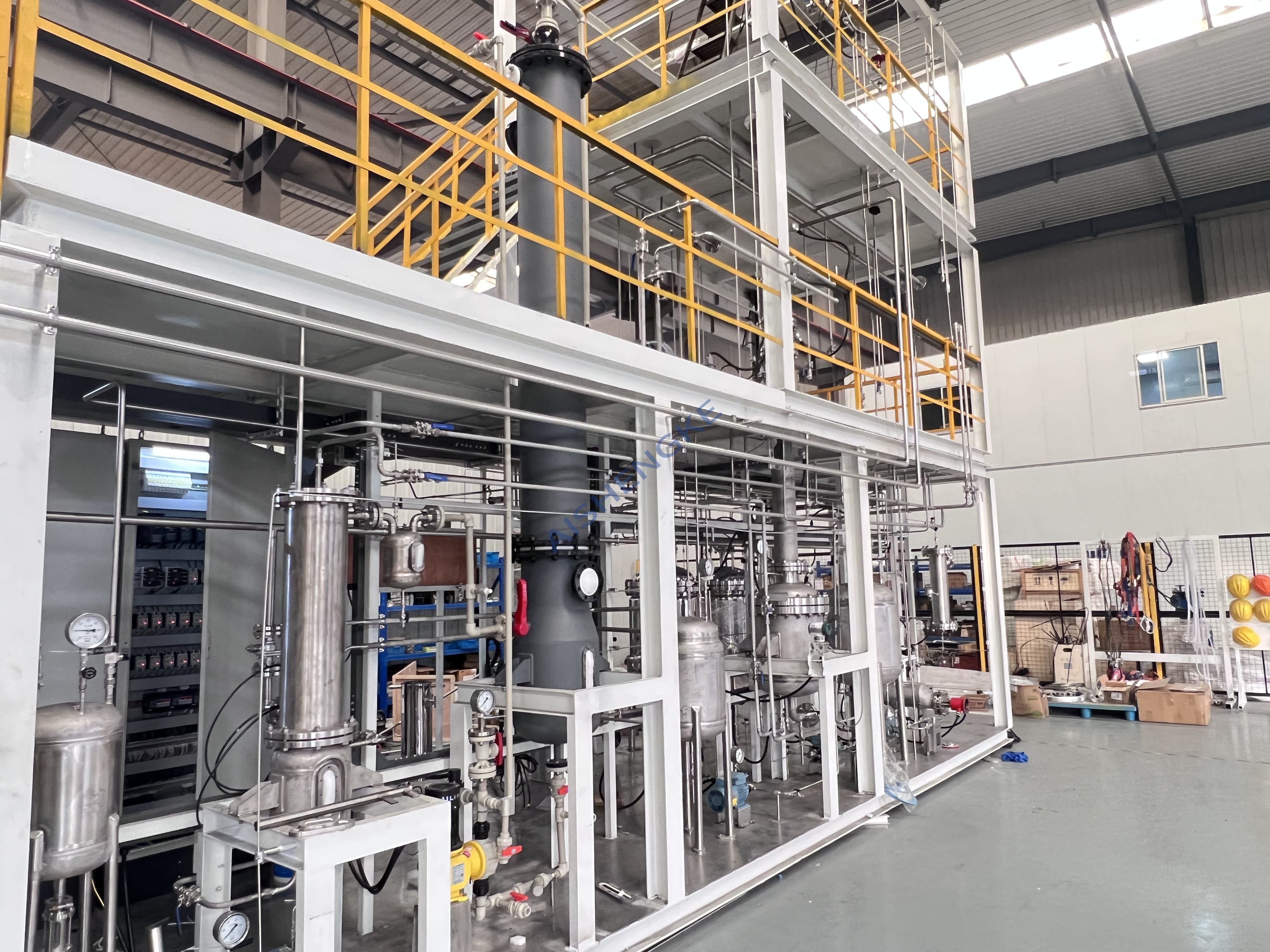
Key words:
Other Cases
Global recruitment of distributors
If you recognize the brand, technology, products and market prospects of Aishengke, we look forward to establishing a strategic partnership with you for win-win cooperation and development. Looking forward to your joining!


